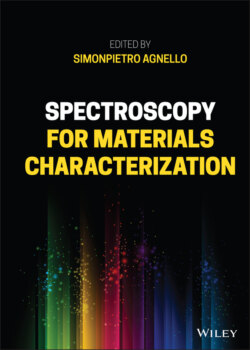Читать книгу Spectroscopy for Materials Characterization - Группа авторов - Страница 29
1.4.1.2 CCD Fiber Optic Device
ОглавлениеMany setups for absorption measurements are nowadays using fiber optics technology. These systems use compact light sources and CCD detectors coupled to gratings to obtain fiber optics spectrometers. The light from the source is driven by an optical fiber to the sample holder directing the light collimated by a lens perpendicular to the sample surface. The light exiting from the sample is collected by a second lens and is directed to another optical fiber that drives the light to the grating that disperses it and then is detected by a CCD. These systems are typically of small dimension and are portable, with many advantages for coupling them in various kinds of experiments like in situ measurements. The opportune choice of source, fibers, and detector enables to use these systems for UV‐Vis‐IR spectroscopy.
A fiber optic instrument equipped with two light sources: a deuterium lamp and a tungsten lamp, and a spectral resolution of 1.7 nm has been used to detect the absorption of quantum dots of CdSe/ZnS. In particular, commercial core–shell nanoparticles with nominal 4 nm core of CdSe and ZnS shell have been dispersed in solution of toluene to detect the absorption as a function of nanoparticles’ concentration [29, 30]. A quartz cuvette of 1 cm has been used for the measurements. Due to quantum confinement effect, the nanoparticles feature an absorption band related to the size of the semiconducting core [29]. As reported in Figure 1.10, a prominent band at 585 nm can be observed for all the concentrations used ranging from 10−3 up to 10−1 mg ml−1. This spectral position is compatible with literature data for this nanoparticles size. The inset of the figure reports the amplitude of absorbance for the maximum of the band as a function of the concentration. A linear trend is found in accordance with the Lambert–Beer law Eq. (1.6).
